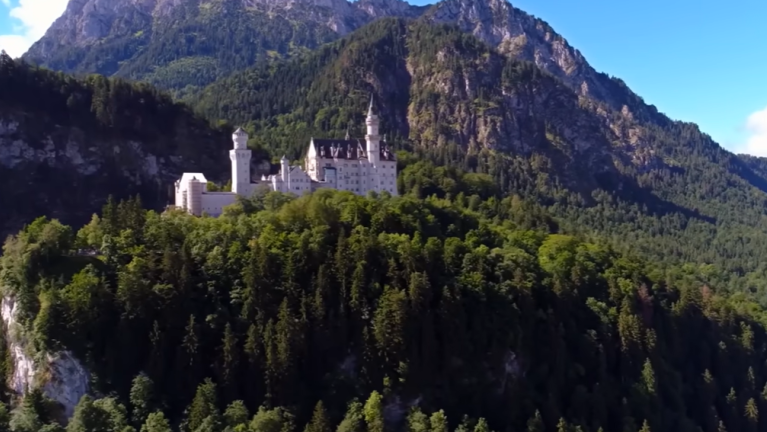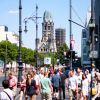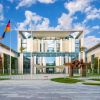Key facts about Germany
Be it geography, politics or economic affairs: find out everything you need to know about Germany here.
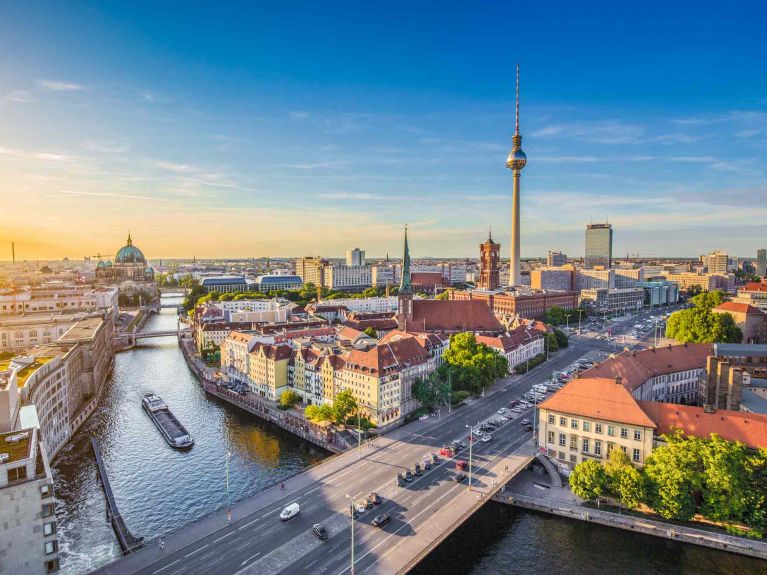
For how long has Germany existed?
The modern German nation state was founded in 1871 when the German Reich was established. When it came to an end, it was followed by the Weimar Republic (1919–1933) and the era of National Socialism (1933–1945). The Federal Republic of Germany was founded on May 23 1949.
Where is Germany situated?
Germany is situated at the heart of Europe. It borders Denmark and the North and Baltic Seas in the north, Poland and the Czech Republic in the east, the Alps, Austria and Switzerland in the south, and France, Luxembourg, Belgium and the Netherlands in the west.
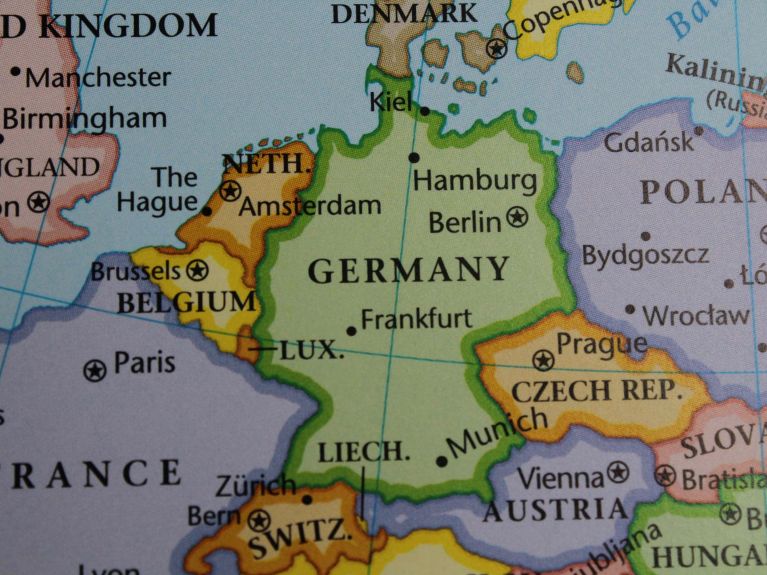
What is the population of Germany?
Germany has around 84 million inhabitants, making it the most populous country of the European Union (EU).
How big is Germany?
Germany covers a surface area of some 358,000 square kilometres. This makes it the EU’s fourth-largest country, after France, Spain and Sweden.
What is the capital of Germany?
The German capital is Berlin. Bonn was the seat of government and the capital of the Federal Republic of Germany from 1949 to 1990.
Which are the biggest cities in Germany?
Germany has more than 2,000 towns and cities. The largest in terms of population (2024) are the following: Berlin (3.9 million inhabitants), Hamburg (1.9), Munich (1.6), Cologne (1.1), Frankfurt am Main (770,000), Stuttgart (630,000), Leipzig (620,000) and Dresden (560,000).
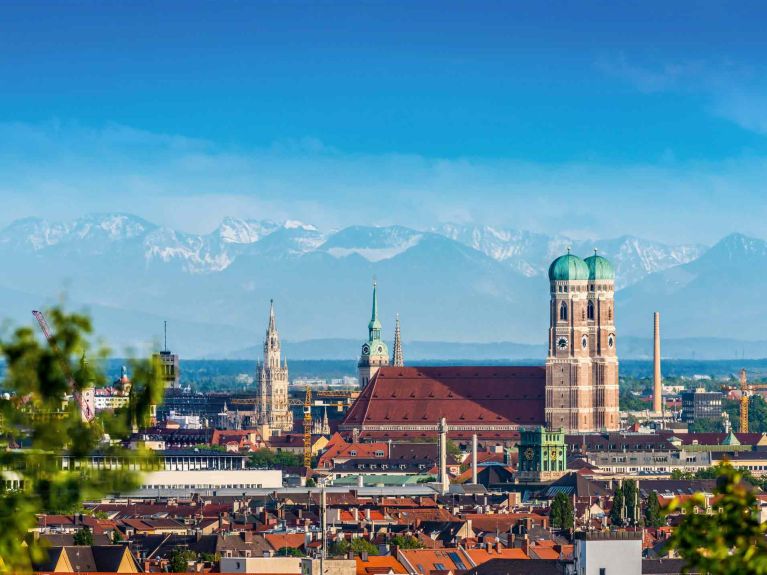
What form of government is in place in Germany?
Germany is a parliamentary democracy with its Basic Law serving as the constitutional foundation. Germany is a federation comprising 16 federal states.
Who governs in Germany?
The federal president is the head of state, an office that has been held by Frank-Walter Steinmeier since 2017. The Federal Government has been led by Federal Chancellor Friedrich Merz since May 2025. Laws are adopted by the Bundestag, while the Bundesrat represents the federal states.
What are Germany’s federal states?
Being a federation, Germany is made up of 16 federal states, each with its own state government: Baden-Württemberg, Bavaria, Berlin, Brandenburg, Bremen, Hamburg, Hesse, Mecklenburg-Western Pomerania, Lower Saxony, North Rhine-Westphalia, Rhineland-Palatinate, Saarland, Saxony, Saxony-Anhalt, Schleswig-Holstein and Thuringia.
What was the GDR?
The German Democratic Republic (GDR) was a socialist dictatorship. It was founded on 7 October 1949 in the Soviet occupation zone in eastern Germany and existed until Germany reunified on 3 October 1990.
What was the division of Germany?
After the Second World War, Germany was divided into four occupation zones. This gave rise to the Federal Republic of Germany (FRG) in the west and the GDR in the east. The most visible manifestation of the inner-German border was the Berlin Wall, construction of which began on 13 August 1961.
When did reunification take place?
Following the peaceful revolution in the GDR and the fall of the Berlin Wall on 9 November 1989, Germany was reunited on 3 October 1990 when the GDR became part of the FRG. Ever since, Germany has celebrated the Day of German Unity - its national holiday - on the 3rd of October.
Which international organisations does Germany belong to?
The United Nations (UN, since 1973), NATO (since 1955), the European Union (previously the European Community, since 1957/1958), G7 (founding member in 1975), G20 (since 1999), the IMF (since 1955), the World Bank (since 1952), the WTO (since 1995, and in GATT, its predecessor, since 1951), the OECD (since 1961), the Council of Europe (since 1950) and the OSCE (since 1973).
How strong is the German economy?
Germany is one of the world’s largest and strongest economies and export nations. In 2024, Germany generated a gross domestic product (GDP) of over 4.3 trillion euros, putting it on a par with Japan behind the USA and China. Germany’s per-capita GDP totalled nearly 52,000 euros in 2024.
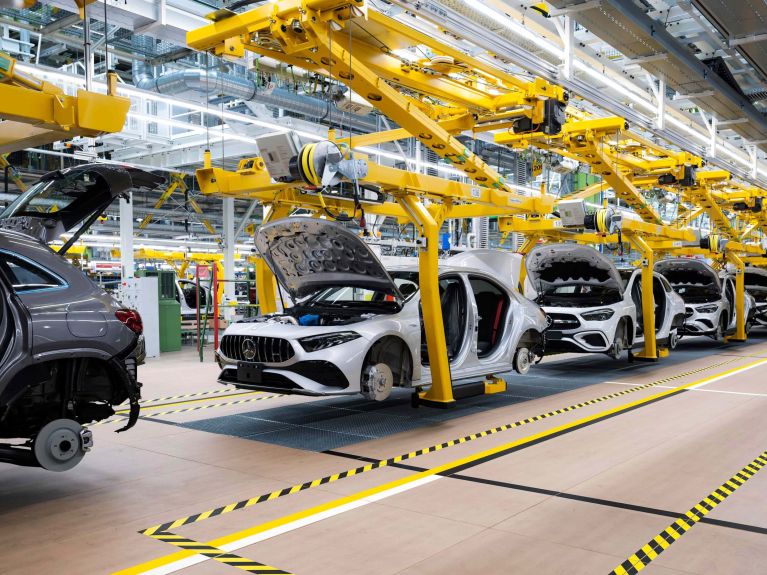
What is the German economy known for?
Germany is one of the world’s leading industrialised countries in such sectors as automotive and, mechanical engineering, chemicals, electrical engineering, medical technology, green technologies and AI research. The label “Made in Germany” is internationally regarded as a hallmark of quality.
Which skilled professionals are in demand in Germany?
IT specialists, engineers, nurses, skilled craftspeople and specialists in renewable energies and artificial intelligence are in particular demand.
Which currency is used in Germany?
The euro (€) has been the official currency since 2002.
Which languages are spoken in Germany?
The official language, and indeed the native tongue of most people who live in Germany, is German, though dialects (such as Bavarian) are also widely spoken in some regions. Around 60 % of people speak good English, while roughly 15 % have at least a basic knowledge of French and 8 % know some Spanish. The largest native language groups besides German are Turkish, Russian, Arabic, Polish and Italian. Overall, roughly a quarter of the population is multilingual.
How many immigrants are there in Germany?
In 2024, Germany was home to some 21 million people of migrant background. That’s roughly a quarter of the population.
Which religionsare there in Germany?
Approximately 24 % of people in Germany are Roman Catholic and 22 % are Protestant. Around 46 % have no religious affiliations, while some 7 % are Muslims. Jewish communities have around 100,000 members.
Which famous Germans are there?
Particularly famous people from Germany include Johann Sebastian Bach, Albert Schweitzer, Hannah Arendt, Ludwig van Beethoven, Johann Wolfgang von Goethe, Albert Einstein, Karl Benz, Marlene Dietrich, Thomas Mann and Immanuel Kant.
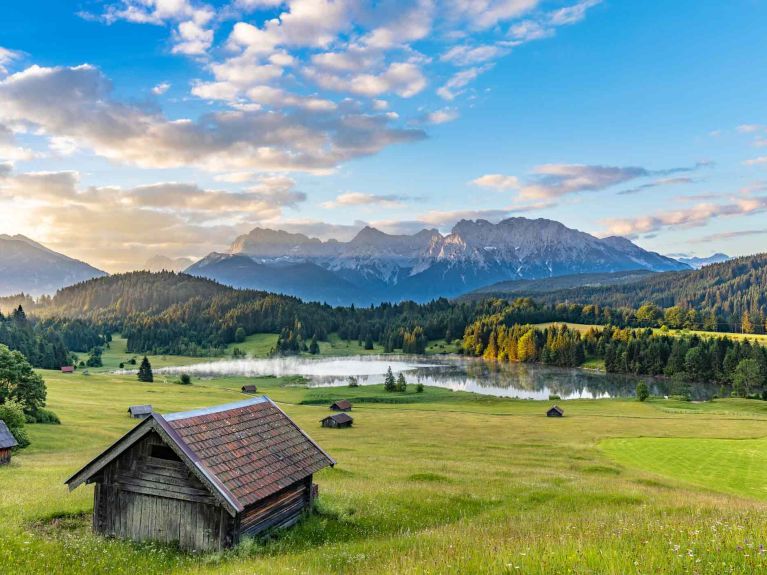
Does Germany have a lot of nature?
Yes, it does. Around a third of the country is forested. Germany borders the North and Baltic Seas in the north and the Alps - where the Zugspitze is the highest mountain (at 2,962 metres) - in the south. Germany also has low mountain ranges such as the Black Forest, Harz, Bavarian Forest and Ore Mountains, more than 10,000 lakes, major rivers such as the Rhine, Danube and Elbe, as well as 16 national parks, over 100 nature parks and more than 8,000 conservation areas.
Which are the principle tourist attractions in Germany?
Germany is an attractive tourist destination with numerous attractions. They include for example the Brandenburg Gate in Berlin, Cologne Cathedral, Neuschwanstein Castle in Bavaria, Berlin’s Museum Island, Heidelberg Castle, Rothenburg ob der Tauber and the Elbphilharmonie concert hall in Hamburg. Germany boasts over 55 UNESCO World Heritage sites.
Dieses YouTube-Video kann in einem neuen Tab abgespielt werden
YouTube öffnenThird party content
We use YouTube to embed content that may collect data about your activity. Please review the details and accept the service to see this content.
Open consent form